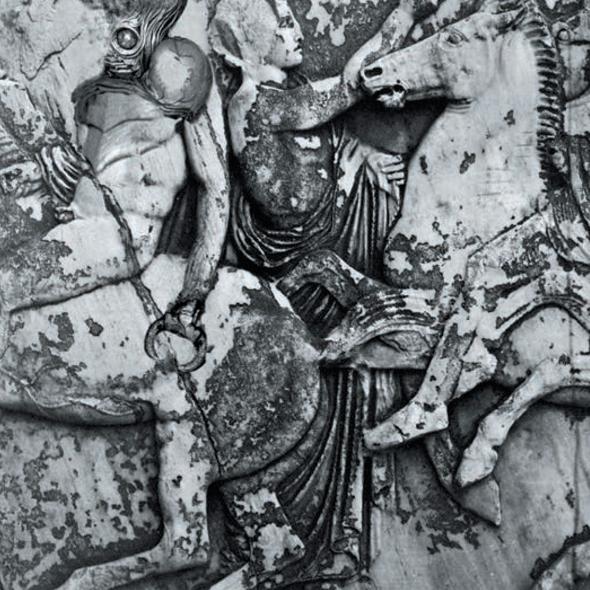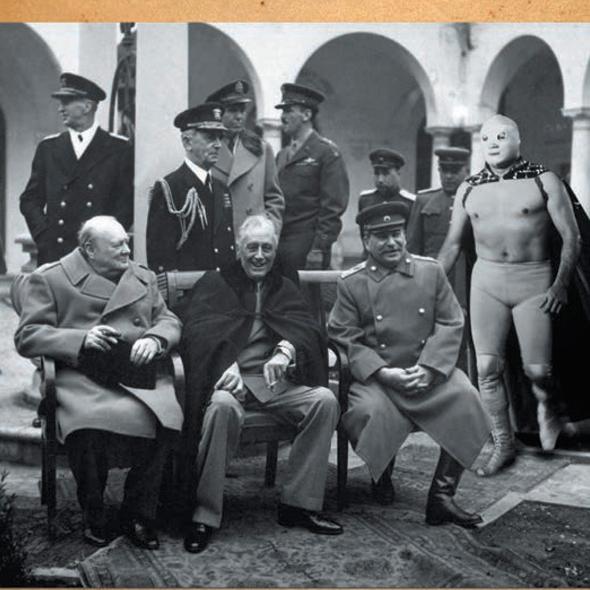Excerpted from Alternate Histories of the World by Matthew Buchholz, out now from Perigee.
In our modern age of inter-nets, cellular telephones, and horseless carriages, we have lost much of our initial wonder at fantastic beasts and creatures. Who needs a clanking, steam-powered robot when we can carry personal computers in our pockets? Many schoolchildren no longer believe in the great river beasts of Venice or sand creatures of the Sahara. Yet the images of our monstrous past remain, forever preserved in archives, libraries, and historical records. Alternate Histories of the World collects them.
The Parthenon
432 B.C., Greece

johnc0ad
Constructed between 447 B.C. and 432 B.C. as a temple to the goddess Athena, the Parthenon has survived as a lasting symbol of the beauty, grace, and industriousness of the ancient Greeks. In addition to the structure itself, the building’s frieze has achieved particular fame as one of the best examples of sculpting in marble to come out of this period. Created (or at least supervised) by the great artist Phidias, the frieze mainly depicts a lengthy procession that includes a great number of historic and mythological figures, including many of the Olympians, Athena herself, a glimpse of a Martian warrior on horseback (pictured), and numerous classes of citizenry. Yet it’s far-fetched to believe that Martians actually rode in battle with the ancient Greeks; more likely the carving was a tribute to a visiting warrior or a kind of talisman designed to keep the building safe from Martian heat rays.
Trades in the Middle Ages
Circa 1400, England

johnc0ad
This hand-drawn chart depicts the emergence of the tradesman class during the Dark Ages in Europe. With the growth of cities and specialized goods, trades and apprenticeships sprang up, eventually forming the basis for a new middle class that would lift peasants out of poverty. Some of the trades listed here include blacksmith, tailor, box-maker (what we would consider a carpenter), and Zombie, spelled with the traditional Middle English, Zombye. England, like the rest of Europe, was far behind Africa and other continents when it came to killing the Living Dead. As late as 1330, Zombyes were considered to be people of respectable and enviable status, as their demands for food and shelter were minimal.
It was this misguided embrace of the Living Dead that led to the Zombye epidemic of the 1350s, or as it is commonly known, the Black Death. Between 1348 and 1350, almost half of Europe’s population was turned into Zombies due to the relentless spread of the disease. Finally, in the late 15th century, physicians began to apply the standard methods of decapitation and cranial injury to the problem, often in Plague Doctor costumes (pictured) to remain protected from bites and attacks on their persons. Yet it would take more than 150 years for the Living Dead population in Europe to recede to normal levels.
The Conference at Yalta
1945, Crimea

johnc0ad
As the war in Europe began to point to an Allied victory, the so-called Big Four arranged a meeting in Yalta, on the Crimean Sea, to discuss postwar organization and German occupation. In attendance were British Prime Minister Winston Churchill, American President Franklin Delano Roosevelt, Soviet General Secretary Joseph Stalin, and Mexican Luchador and People’s Champion El Santo. The key points of the conference included: a requirement of unconditional surrender from Nazi Germany, the division of Germany into several police states, establishment of reparations and full demilitarization, an agreement to track down all Nazi war criminals and fugitives as well as the fiendish wrestler known only as the Black Skull, Eastern Europe’s de facto annexation by the Soviet Union, and an agreement that the Soviet Union would join the United Nations.
Roosevelt is in visibly poor health here and would die two months after the conference. Churchill would soon be replaced by Prime Minister Clement Attlee. Stalin and El Santo would attend the final Potsdam Conference at the final end of World War II; Stalin would stay in power until 1952, while El Santo remains the ageless, mysterious embodiment of masculinity and heroism.
—
Excerpted from Alternate Histories of the World by Matthew Buchholz, out now from Perigee.